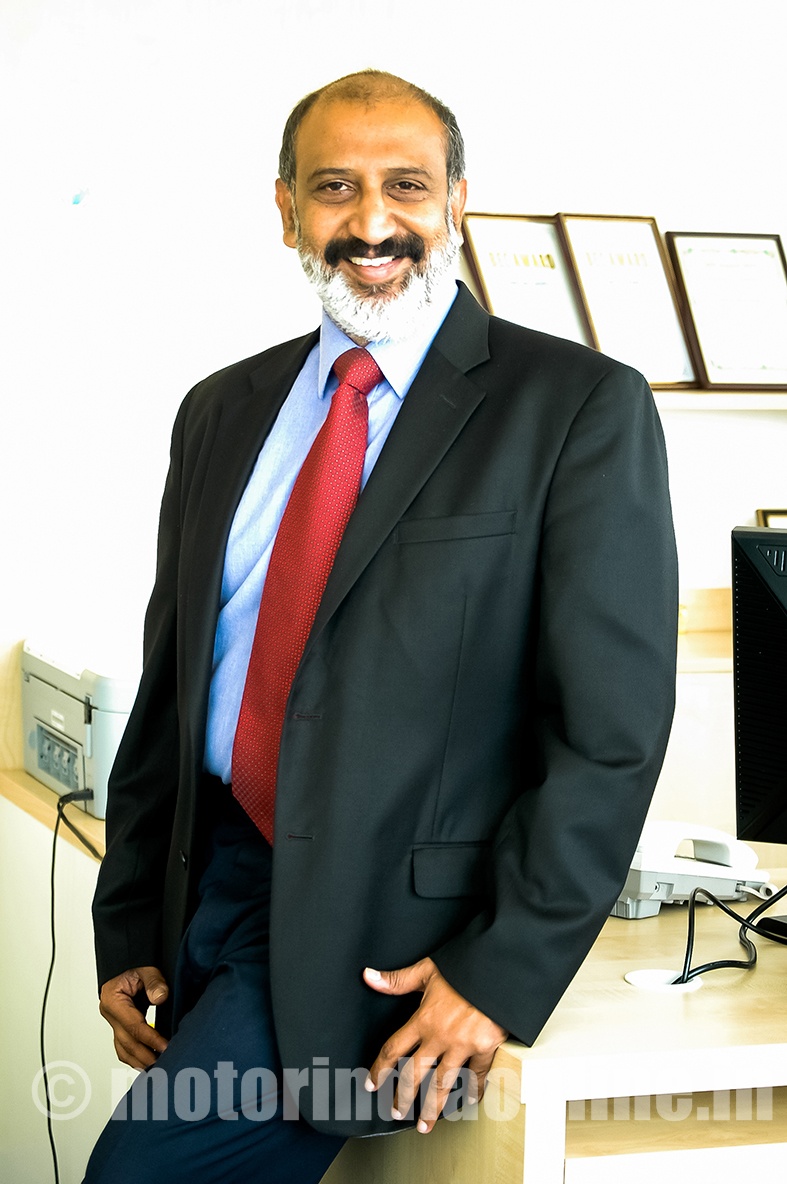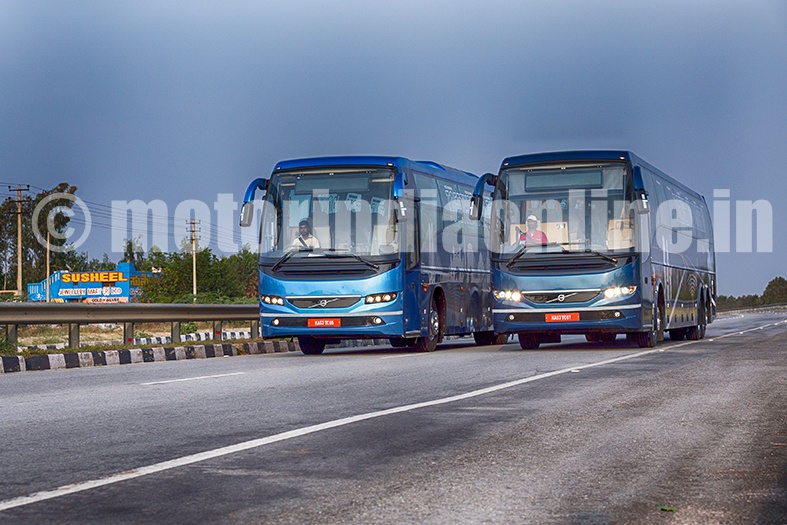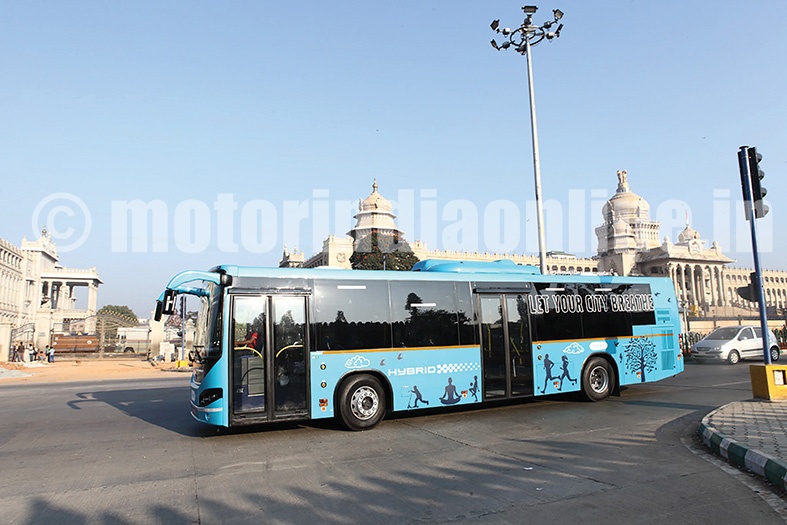Continues to innovate in line with customer requirements
Volvo Buses has completed 15 years of its operations in India. Starting from the B7R it had launched way back in 2001, Volvo has come a long way from being a single product, single segment company to having multiple products across multiple segments in the Indian bus market.
When Volvo entered the market there were many features in its products that were never demanded by any regulation or by any customer. But Volvo‘s uncompromising focus on safety and comfort made it stand out from competition and, in the process, paved way for a massive upgradation in the country’s bus industry.
Whenever a new bus model is developed in India, the powertrain usually remains almost the same even with varying lengths. But in the case of Volvo, the longer the bus, considerably higher is the power to weight ratio. Today a 12 m Volvo bus has a power rating of 330 hp which goes all the way up to 410 hp for a 15m bus.
In 2006, the country’s city bus segment saw a major revolution with the introduction of the Volvo B7RLE low-entry city bus. Today with cities becoming more aspiring and passengers more demanding, Volvo’s 1,500 city buses in 34 cities have completely changed the way people travel in the country.
While there is no comparable model to Volvo’s city buses commercially available in India today, the Bangalore-based major has recently unveiled its new 9400 coach range for the domestic market – in 12 m, 13.8 m and 14.5 m variants – all compliant with BS-IV emission norms, further raising the bar higher for competition to reach. Running a bus business in India is not a sprint but a long-distance marathon; Volvo certainly seems prepared for it.
We met Mr. VRV Sriprasad, Managing Director – South Asia, Volvo Buses, at the company’s Hoskote plant for a detailed interaction on the new coach range, future plans and more.

Excerpts:
What was the motive behind the development of the new 9400 range?
The vehicle platforms need to be upgraded based on customer requirements. The 12 m version is our front face as it is the bread and butter product. For the 13.7 m and 14.5 m versions we had completely different engines earlier. Now, we have integrated them under the same powertrain with different power ratings. This was also part of our global strategy with the Euro 5 and Euro 6 emission norms. Both these multi-axle products are recommended for long-distance routes, say, over 1,000 km, and we thought rationalizing the platforms will help us as well as our customers.
How confident are you about maintaining your market position?
We are a niche player with a niche market and are focused on both city bus and inter-city coach market. We have the same team working on both the product segments and are upbeat about the market. We are a clear leader in the segments we operate in and look forward to continuing the same.
Volvo had introduced the 9100 coach in the single-axle segment. Can we expect a similar product in the multi-axle as well?
We generally do not add products just for the sake of adding. We work on a new product only if we see a strong value for our customers and a clear product gap. In the case of the 9100 coach, it was a very good exercise made in India and we saw a strong value proportion too. But considering our own cost targets, we could not sell in large numbers. So if we do not see a strong value proposition for our customers we do not work on new products.
Volvo Buses has one of the most renowned driver training programs in the country. How many drivers have you trained till date and how is the program doing?
We have phenomenally changed the way this society looks at the driver profession. We at Volvo certify a driver after a 5-day driver training program, put him in our coach and call him as ‘Coach Captain’. Till now, we have trained more than 10,000 drivers and we do not deliver a coach until we train three of the customers’ drivers to drive our coach. This has had a big impact over the years, and today trained drivers earn a lot more than the other drivers.
How do you decide the offering between automatics and automated transmission like your I-shift?
We always offer features that are of value to our customers. Since inception we have been offering automatics on our city buses. The I-shift automated transmission was provided as a standard feature in our 14.5 m coach, while in the 13.7 m coach we have offered it since 2014 following a demand from customers. So we are clear in what has to be given to customers and ensure our strategies are not mixed. We look forward to offer more features like the I-coaching by which the Coach Captain can cross-check his performance and deliver a better drive overall.
It was a revolution when Volvo engines came with a service life of one million km. What is the next wave of technology we can expect from Volvo?
We are working on a lot of small concepts like I-coaching and alcholock which would be small but significant value addition for our customers. Similarly we are synchronizing the oil drain intervals for various aggregates so that the frequency of pit stoppage is reduced, and the cost per km comes down eventually. Instead of changing the engine oil at 35,000 km, we have now extended it to 60,000 km. Also, all our buses are now available with two years warranty, which comes from the reliability levels we have established over the years.
How strong is your current service network and what are the updates on that front?
While we continue to use the Volvo Trucks network for our service needs, we now have service centres at six locations – Bangalore, Chennai, Cochin, Hyderabad, Mumbai and Pune – which handle only buses and not trucks. Besides, we have 12 more centres where both trucks and buses are serviced. We are working on a new model on the network side and will take some more time to reveal details of the same.
Volvo has been working on alternative fuels for a long time. Where do you stand at present?
Volvo is working in the field (of alternative fuels) for more than 10 years and has spent considerable amount of time and money to understand the right alternative to fossil fuel. CNG, LNG, hybrids and full electrics being the major options, we at Volvo Buses, after making series trials, have concluded that pure electric is the best and suggested model for the future. We are the first company in the world to launch both hybrids and pure electric buses which are running in Stockholm in Sweden on route number 55. The commercial launch of our electric buses will happen next year globally. The hybrid buses we have sold to NMMT (Navi Mumbai) have covered more than 20,000 km, with a measured fuel performance improvement of around 35 per cent. This is a phenomenal start and we look forward to selling more of these buses in future.
Volvo was smart enough to bring in a new category under the UBS II as premium low-floor segment. Can we expect a similar category in hybrids as well?
Incidentally, the MoUD has already made a differentiation between hybrids and super hybrids. If all the auxiliaries in a bus run with the alternative power, then it is a super hybrid and thankfully we are already in this category.
What is the way forward for Volvo Buses in India? Given the market scenario, can we expect more chassis sale from Volvo?
Chassis sale is not our preferred way of selling buses in India, and it was not part of our original plan. But since we were losing market in sleeper coaches, because we as an OEM could not make sleepers, our chassis sale is limited for sleepers. It was more of a customer demand and will be limited in numbers as well as time frame. We are in discussions with the Government, requesting it to release the bus specifications as early as possible so that we can make sleeper coach in-house, validate and offer them to customers going forward.
Volvo Buses’ journey in India
2001 Launch of the first Volvo bus in India – Volvo B7R inter-city coach
2002 Volvo rolls out the 100th bus in India
2003 Start of exports to SAARC countries
2005 1000 Volvo buses in India
2006 Launch of Volvo City Bus – India’s first air conditioned high performance bus for city commute
2008 Launch of India’s first multi-axle inter-city coach
2011 Start of exports to South Africa
2012 Launch of Volvo 9400 14.5m intercity coach
2015 Volvo city buses operating in 34 locations across India
2015 Volvo becomes the first bus manufacturer to comply with Bus Body Code
2016 Launch of Volvo Hybrid City Bus – India’s first hybrid bus for city commute
2016 Launch of Volvo’s New Coach Range

